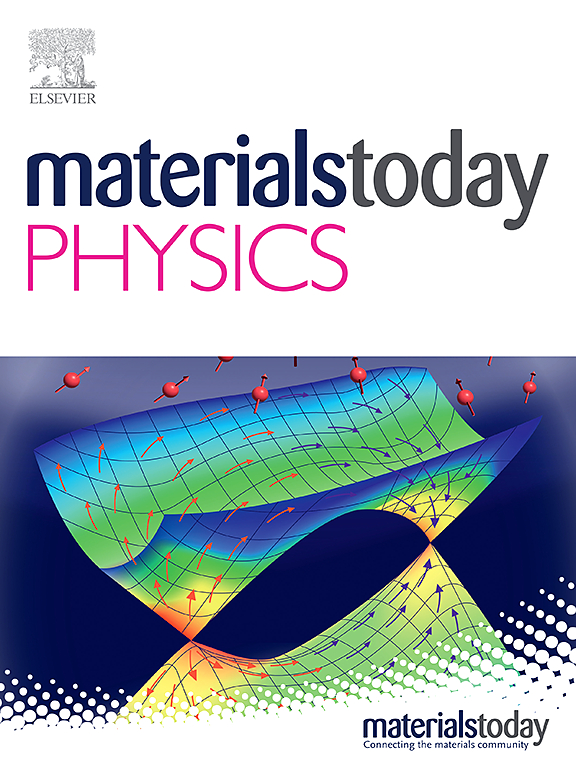Large-area high-yield 1T-TiSe2 saturable absorber for wavelength-tunable ultrafast fiber lasers
IF 10
2区 材料科学
Q1 MATERIALS SCIENCE, MULTIDISCIPLINARY
引用次数: 0
Abstract
The production of high-yield saturable absorbers (SAs) with broad effective modulation zones remains a considerable challenge for the advancement of compact ultrafast fiber lasers. We present a fiber-end-integrated large-area high-yield 1T-TiSe2 saturable absorber fabricated using chemical vapor transport (CVT) and accurate transfer technique. This strategic method achieves a three-order-of-magnitude enhancement in device area (tens of micrometers) compared to conventional liquid-phase exfoliation approaches. The comprehensive 1T-TiSe2 has exceptional nonlinear optical properties, with a modulation depth of 20.1(±0.3)% and a saturation intensity of 7.29(±0.2) μJ/cm2. The erbium-doped fiber laser enables the generation of stable femtosecond pulses with a compressed duration of 966 fs at a frequency of 13.84 MHz, marking a significant improvement over previously recorded picosecond durations. Additionally, a wavelength-tunable Q-switched laser has been demonstrated, including an 18 nm spectral range and maximum single-pulse energy of 62.4 nJ at 1565.8 nm. The findings highlight the exceptional potential of large-area 1T-TiSe2 in integrating compact fiber laser design with high-energy ultrafast photonics, therefore establishing a versatile platform for tunable, high-performance pulsed laser systems.

用于波长可调谐超快光纤激光器的大面积高产量1T-TiSe2可饱和吸收体
生产具有宽有效调制带的高产率饱和吸收器(SAs)仍然是紧凑型超快光纤激光器发展的一个相当大的挑战。提出了一种采用化学气相传输技术和精确转移技术制备的纤维端集成大面积高产率1T-TiSe2饱和吸收体。与传统的液相剥离方法相比,该策略方法在器件面积(数十微米)上实现了三个数量级的增强。综合的1T-TiSe2具有优异的非线性光学性能,调制深度为20.1(±0.3)%,饱和强度为7.29(±0.2)μJ/cm2。掺铒光纤激光器能够在13.84 MHz的频率下产生稳定的飞秒脉冲,压缩持续时间为966 fs,比之前记录的皮秒持续时间有了显着改善。波长可调调q激光器的光谱范围为18 nm,在1565.8 nm处的最大单脉冲能量为62.4 nJ。该研究结果突出了大面积1T-TiSe2在集成紧凑型光纤激光器设计与高能超快光子学方面的卓越潜力,从而为可调谐高性能脉冲激光系统建立了一个通用平台。
本文章由计算机程序翻译,如有差异,请以英文原文为准。
求助全文
约1分钟内获得全文
求助全文
来源期刊

Materials Today Physics
Materials Science-General Materials Science
CiteScore
14.00
自引率
7.80%
发文量
284
审稿时长
15 days
期刊介绍:
Materials Today Physics is a multi-disciplinary journal focused on the physics of materials, encompassing both the physical properties and materials synthesis. Operating at the interface of physics and materials science, this journal covers one of the largest and most dynamic fields within physical science. The forefront research in materials physics is driving advancements in new materials, uncovering new physics, and fostering novel applications at an unprecedented pace.
 求助内容:
求助内容: 应助结果提醒方式:
应助结果提醒方式:


